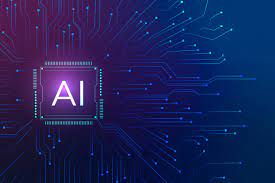Four observations from AI and the Future of Care Work research

You know the statistics and they are alarming. Doctors and nurses are burning out, especially in the ER. Turnover is highest in the lowest-paid care positions – home care is at a high point at 77% as of 2022. Pressure is growing in senior living to ‘keep people well’ in conjunction with a higher level of acuity of care needs. Demand and costs are up, and availability of workers is down. Add the baby boomer population growth – all will pass 65 in just 7 more years — in conjunction with a shortage of workers able and willing to help them. Hospitals are closing, particularly in rural areas – boosting expectations about care delivery in the home. And in 2023, AI technology is emerging to manage and even improve care. Here are four observations from the just-completed research interviews on this topic:
Machine learning and analytics convert population health to a ‘population of one.’ With job turnover and shortages, care-related services now see the opportunity of AI chatbots, machine learning, and predictive analytics to mitigate some of the staff-related challenges they face. For example, in healthcare, innovators are looking at AI as a way to analyze unstructured data. Avatars such as care.coach are emerging built on health protocols and large data sets. Machine learning technology can, as one interviewee noted, consume transcription, EMR data and free text to consider a population of one.
Tech tools offer training and concierge-like assistance. As training of CNAs with CNAOnline, partnerships with skilled nursing facilities enable training coordinated by a nurse to be available 24×7, ‘blending professional instruction with technology and accessibility.’ AI is being used to train medical professionals via simulations of patient interviews in Hippocratic.ai. Companies like Carlton Senior Living offload staff informational tasks to chatbots, freeing staff for other work. Virtual sitters with telehealth support are replacing the in-person in-hospital 24×7 monitoring of at-risk patients.
Actual care coordination will become a reality with appropriate tech enablement. To refresh the career itself, RNs are being retrained as care coordinators of acute intervention or managing chronic illness. Tech information from sensors and other real-time remote monitoring will serve as the backbone of that transition, supported by offerings like CareDaily, Lifeguard Health and Caspar.ai. Non-pharmacological interventions are offered to help with dementia care via TapRoot.
The AI caregiver, like other uses of AI, will become a 24×7 reality. The days of waiting until morning to communicate with a healthcare provider will be remembered as archaic. Instead, AI tech for check-in and averting problems will be part of the standard of care. In addition to being able to ask a series of questions and sort through established practice information online, moving forward consumers will learn to avoid lengthy on-hold waits and avoid emergency room visits with a few questions and answers to ever-smarter chatbots. Despite misgivings well-reported in the media, AI is heading for healthcare. As predicted in The AI Revolution in Medicine, care advice will validated by providers – and providers will become familiar and comfortable with obtaining information from chatbot assistants to help even a bit with the pressure of their jobs.







